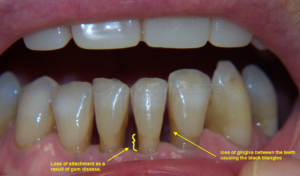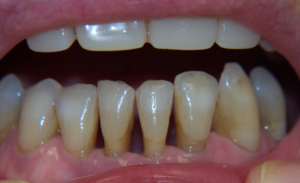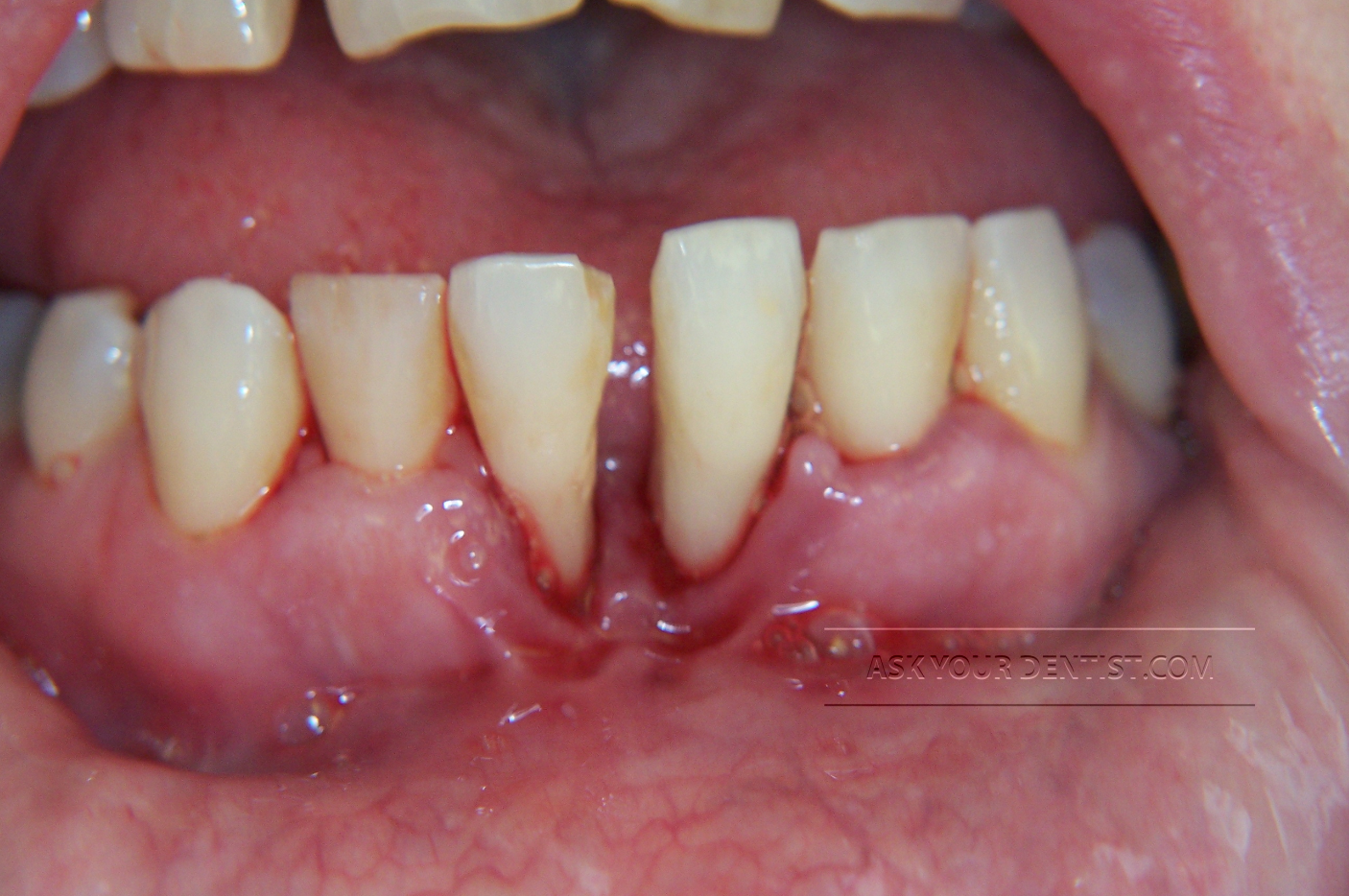Gum disease is also known as periodontitis.
It is a very common disease that could affect the patient without clear symptoms or pain. The condition may go undetected for years before the patient becomes aware of it.
How it starts:
We all have some plaque covering our teeth.
If we do not clean our teeth, the harmless bacteria population inside the plaque changes into a harmful one that irritates the gum margin around the teeth. The immune system fights the dangerous bacteria and its products with its own potent defensive products. The constant battle between the body and the bacteria damages the surrounding tissue that supports the tooth. The tooth then slowly loses the attachment between its surface and the surrounding bone. The bone is destructed and the tooth becomes loose to the point where it no longer can function and has to be taken out.
The initial phase of the disease is called Gingivitis. Gingivitis is a reversible process. This means that if the plaque is removed the gum will go back to the original healthy status with no persistent damage. A big percentage of the population has gingivitis.
If the plaque is not removed, it turns into calculus (tartar). Calculus is a hard layer that is attached to the surface of the tooth and is not easily cleaned with a conventional toothbrush.
If calculus is left long enough, it will cause the gum to recede with bone loss as a result.
Periodontitis is an irreversible process. This means that even when the infection is treated and the bacteria is removed, the damage caused by the disease cannot be fully repaired. The bone level around the affected tooth recedes and a pocket is created between the tooth and the gums.
The longer you leave the disease untreated, the greater the damage is to the tooth and gum structure.
These pictures are taken after successful gum treatment. The gum is healthy with minimal bleeding. But as a result of a long period of gum disease the patient lost some of the bone and gum attachment. The damage makes the teeth look longer and one can notice the dark triangles between the teeth due to the lack of gingiva.

 Healthy gums after gum treatment
Healthy gums after gum treatmentRegular visits to the dentist and simple oral hygiene instructions such as brushing and flossing can prevent gingivitis from turning into periodontitis.
Symptoms:
The affected gums bleed easily, swell and change colour from light pink into dark red. Gum infection often causes bad breath.
In patients suffering from gum disease, the affected teeth can be tender to the touch.
Treatment
A big part of gum disease treatment relies on the patient’s cooperation with the dentist. The treatment plan may consist of:
- Oral hygiene instructions in brushing, flossing and using inter-dental brushes.
- Scaling: removing the plaque and the calculus.
- Root planing: smoothing the surface of the root after scaling.
- Gum surgery is used to reach the infected area and change the bone and gum structure to make it easier for the patient to clean between the teeth.
- Using antibacterial mouthwashes and gels.
- Treatment with antibiotics injected directly in the infected pockets.
If you suffer from gum disease, ask your dentist or a specialist in gum disease (periodontist) about the best treatment options for you.
